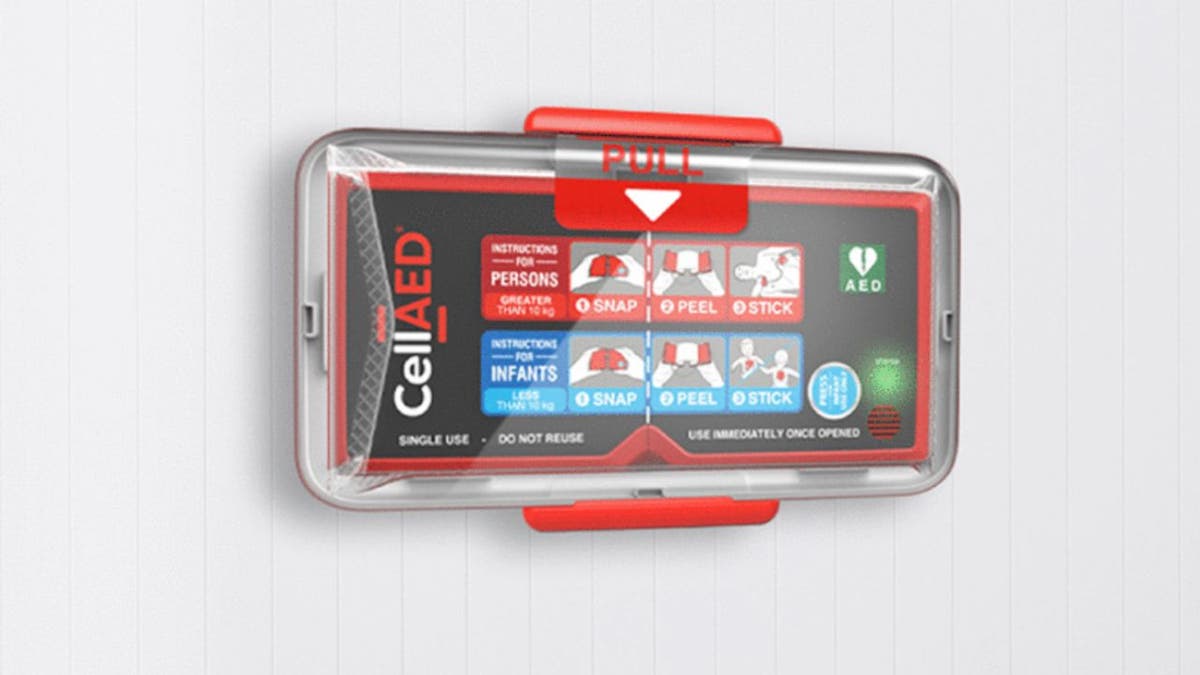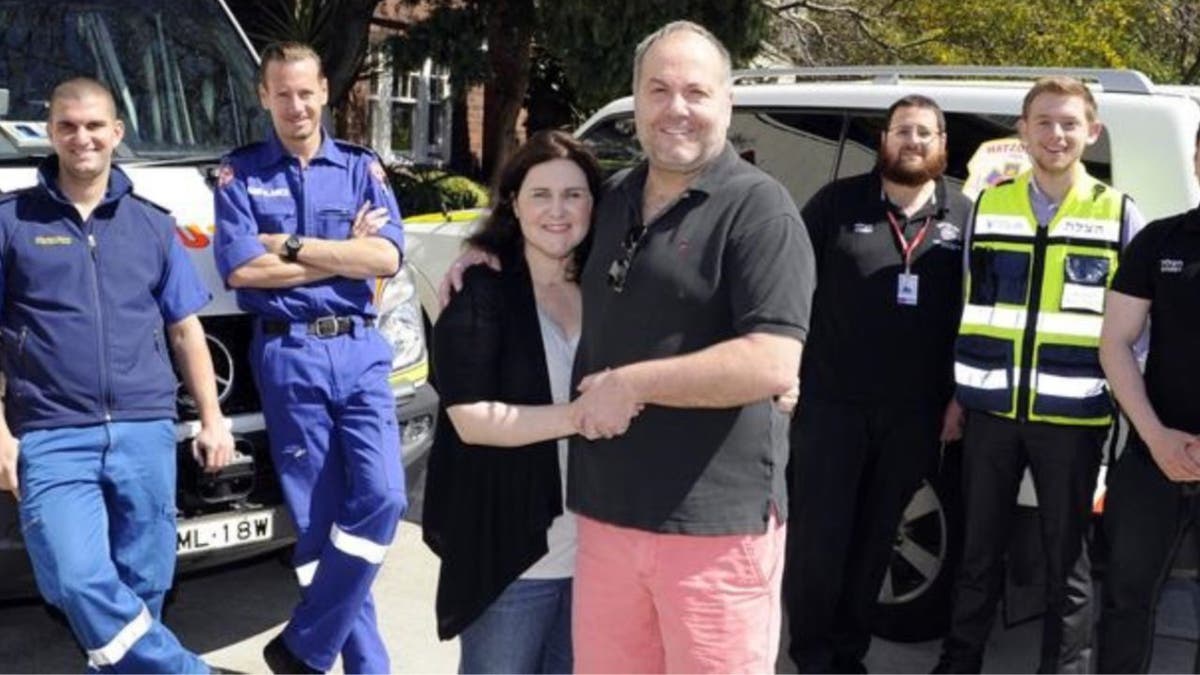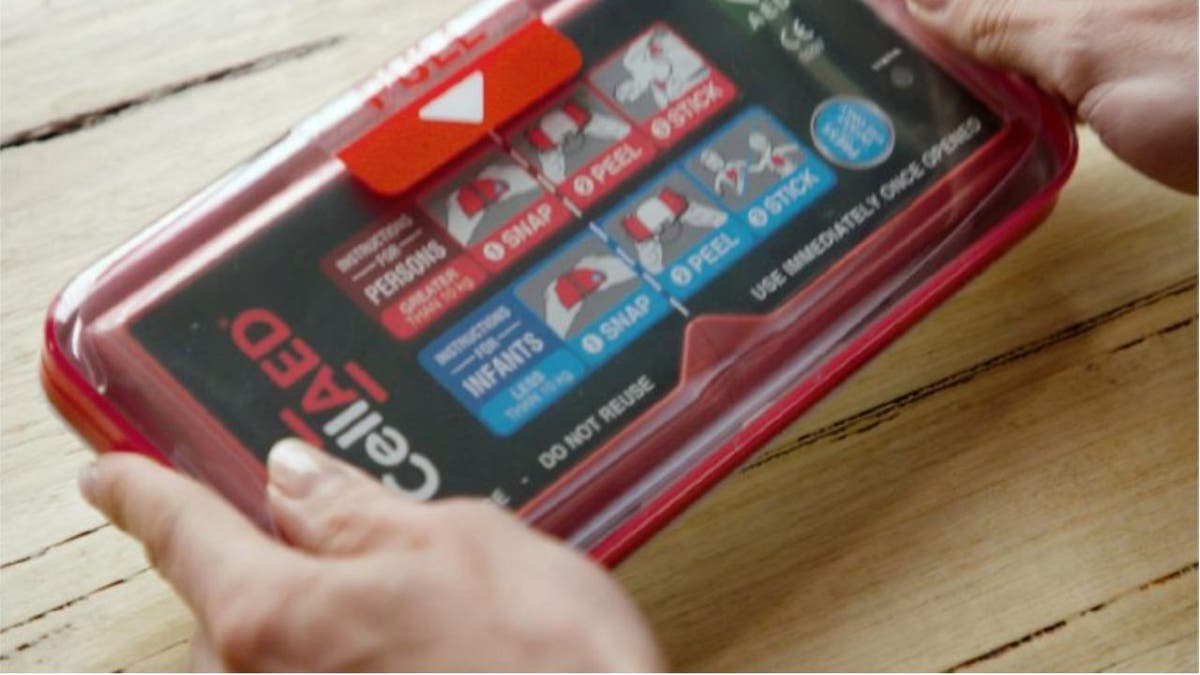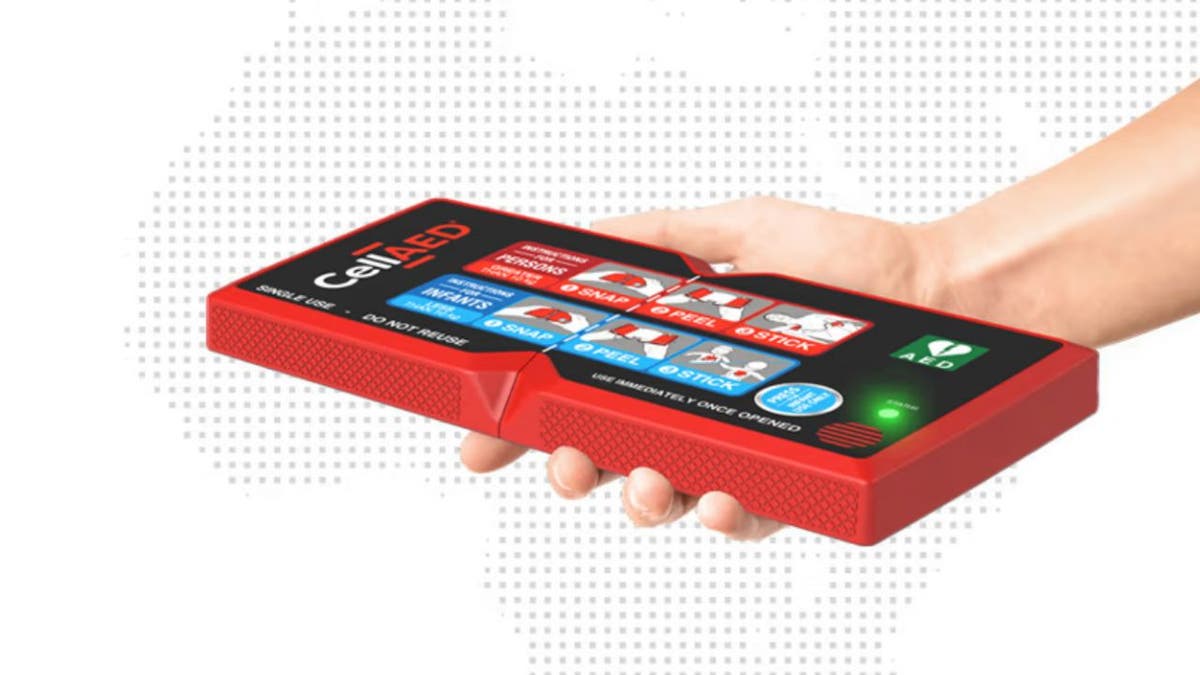[ad_1]
Imagine this scenario. You are at home hanging out with your loved ones, enjoying a relaxing evening. Suddenly, a relative collapses on the floor, clutching his chest.
You call 911, but you know that every second counts.
What if you had a device that could help you revive your relative before paramedics arrive?
That’s the idea behind CellAED, a cell phone-sized personal defibrillator invented by a father who almost lost his wife to cardiac arrest.
CLICK HERE TO GET MY FREE CYBERGUY REPORT NEWSLETTER WITH SECURITY ALERTS AND THE LATEST BLACK FRIDAY DEALS

CellAED’s cellphone-sized personal defibrillator. (CellAED)
MORE: 10 ESSENTIAL HOME SAFETY TIPS TO KEEP YOUR LOVED ONES SAFE
What is cardiac arrest?
Cardiac arrest is a sudden and unexpected loss of heart function, breathing and consciousness. It is caused by a problem in the heart that disrupts its normal rhythm. It is different from a heart attack, which is caused by a blockage in the blood flow to the heart.
According to the American Heart Association, more than 350,000 people in the U.S. experience cardiac arrest outside a hospital each year, and only 10% of them survive. The chances of survival drop by 10% for every minute CPR and defibrillation are delayed.
MORE: 5 TOP WATCHES TO MONITOR YOUR BLOOD PRESSURE

A dramatization of a CellAED in use. (CellAED)
How to treat someone suffering a cardiac arrest?
Cardiac arrest is a medical emergency that requires immediate treatment. The most effective way to treat it is by using a defibrillator, a device that delivers an electric shock to the heart to restore its normal rhythm. However, defibrillators are not widely available in public places or homes, and most people are not trained to use them.
DO COVID-19 HOME REMEDIES REALLY WORK? DOCTORS WEIGH IN ON SALTWATER GARGLES, NASAL RINSES AND MORE
The inspiration behind the device that saves lives
That’s why Donovan Casey, a father of four, who almost lost his wife Sarah to cardiac arrest, created a device called CellAED. It is a personal defibrillator that is designed to be easy to use, portable and affordable.
He spent two years developing CellAED. His wife’s near-death medical emergency helped him realize there was a need for a personal defibrillator that could be carried around and used by anyone in an emergency.

Donovan Casey, center right, invented CellAED after nearly losing his wife Sarah to cardiac arrest. (CellAED)
CYBERGUY: GET THE BEST DEALS WITH MY 2023 AMAZON BLACK FRIDAY BATTLE PLAN
How does the defibrillator work?
CellAED is about the size of a cellphone and can be carried in a pocket, purse or backpack. It can be activated by snapping it in half, which triggers an automatic voice that guides the user through the urgent response.
It instructs users where to stick the pads on the patient’s bare chest, analyzes the patient’s heart rhythm and delivers a shock if necessary.
It also plays a metronome beep to guide the user through CPR. Here’s the interesting part; it can be used by anyone, even without prior training or experience.
What makes Casey’s defibrillator different from others?
CellAED is different from other defibrillators in several ways. First, it is much smaller and lighter than conventional defibrillators, which are usually bulky and heavy.
Second, it is much cheaper than conventional defibrillators, which can cost thousands of dollars. CellAED is expected to cost around $500, making it more accessible and affordable for the public.
Third, it is more user-friendly than conventional defibrillators, which can be intimidating and confusing for untrained individuals. CellAED simplifies the process and provides clear and simple instructions.

The cellphone-sized CellAED. (CellAED)
MORE: HOW TO SET UP ALEXA FOR EMERGENCIES
When will the personal defibrillator be available in the U.S.?
CellAED is undergoing clinical trials and regulatory approval processes. The company hopes to launch the device in the U.S. market by the end of 2024. If approved, it could be a game changer for cardiac arrest prevention and treatment.

A CellAED fits in the palm of your hand. (CellAED)
BILLS’ DAMAR HAMLIN A ‘FULL GO’ AT TRAINING CAMP NEARLY SEVEN MONTHS AFTER CARDIAC ARREST
Alternative solutions for cardiac arrest treatment
If you want to take action now and not wait for this CellAED device, there are some other options that you can consider. Here are some of them:
Automated External Defibrillators (AEDs)
Other AEDs are widely available in some public places such as airports, schools, malls, etc. They are also easy to use, as they provide voice and visual instructions to guide you.
In the U.S., you do not need a medical license to buy or use an AED, but they are quite expensive, ranging from $1,000 to $3,000. We found this one, which, at the time of publishing, cost $1,500 and had nearly 20 reviews with 65% giving it 5 stars.
If you do purchase an AED, you may need to register it with your local emergency medical services agency and follow some guidelines and regulations.
Wearable defibrillators
Wearable defibrillators are devices that are worn on the chest and monitor the heart rhythm continuously. They can automatically deliver a shock if they detect a life-threatening arrhythmia. They are usually prescribed by a doctor for patients who are at high risk of sudden cardiac arrest, such as those who have had a previous heart attack, heart failure or cardiomyopathy. They are covered by most insurance plans, but they may have some limitations and side effects.
CPR training
CPR stands for cardiopulmonary resuscitation, and it is a technique that can be used to manually pump blood and oxygen to the brain and other vital organs of a person who has stopped breathing or whose heart has stopped beating.
It can be done by anyone who has received proper training and certification. It can increase the chances of survival and reduce the brain damage to a cardiac arrest victim until professional help arrives.
You can find more information about CPR and how to get trained and certified by the American Red Cross or the American Heart Association.
GET MORE OF MY SECURITY ALERTS, QUICK TIPS & EASY VIDEO TUTORIALS WITH THE FREE CYBERGUY NEWSLETTER – CLICK HERE
Kurt’s key takeaways
Cardiac arrest is a serious and common health problem that affects millions of people every year around the world. It can happen to anyone, anywhere, at any time. It requires immediate action to increase the chances of survival and recovery. CellAED could be a cheap and easy life-saving solution in the future for someone undergoing cardiac arrest.
What do you think of CellAED and its potential impact? Would you buy one for yourself or your loved ones? Let us know by writing us at Cyberguy.com/Contact.
For more of my tech tips and security alerts, subscribe to my free CyberGuy Report Newsletter by heading to Cyberguy.com/Newsletter.
Ask Kurt a question or let us know what stories you’d like us to cover.
Answers to the most asked CyberGuy questions:
Copyright 2023 CyberGuy.com. All rights reserved.
 FARRATA NEWS Online News Portal
FARRATA NEWS Online News Portal






